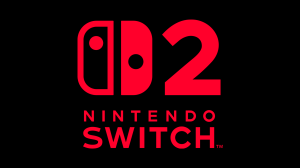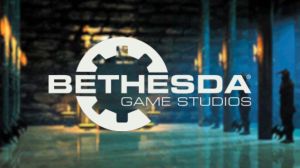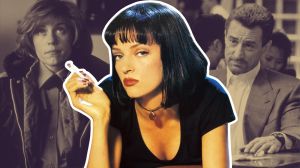The town of Derry, Maine, is back to haunt a new generation of viewers with the premiere of IT: Welcome to Derry. The prequel series, which has debuted to largely positive reviews, rewinds the clock to 1962, exploring the cursed town’s history decades before the Losers’ Club was ever formed. The show draws heavy inspiration from the historical interludes of Stephen King’s original novel, delving into the cyclical tragedies that have long defined Derry. This approach allows the series to function as an origin story for the cosmic entity known as Pennywise and as a cornerstone for a larger, interconnected King universe on screen.
Videos by ComicBook.com
From its opening moments, IT: Welcome to Derry makes its mission clear. The series intends to weave a much larger narrative tapestry, connecting the horrors of Derry to the wider mythology that King has built over his prolific career. The show is packed with subtle nods, clever references, and significant character introductions that will surely reward the author’s constant readers. For fans who enjoy dissecting every frame, the premiere episode is a treasure trove of Easter eggs that both honor the source material and hint at the expansive story that is just beginning to unfold. Warning: Spoilers below for IT: Welcome to Derry, Episode 1
1) Major Hanlon is Mike’s Grandfather

The premiere episode introduces viewers to two decorated Air Force officers who have been reassigned to a military base on the outskirts of Derry, Captain Pauly Russo (Rudy Mancuso) and Major Leroy Hanlon (Jovan Adepo). The surname Hanlon is immediately recognizable to fans of IT, asLeroy Hanlon is the grandfather of the future Loser’s Club member, Mike Hanlon (Chosen Jacobs). This piece of backstory adds a new dimension to the Hanlon family’s deep-rooted history in Derry and their long-standing connection to the town’s central tragedy. In the 2017 film, Mike’s grandfather (Steven Williams) is a farmer who teaches him to be tough by having him slaughter sheep. Seeing Leroy as a respected military officer in 1962 sets up a compelling narrative arc that will likely explore what events led him to abandon his military career and how his own inevitable confrontation with Pennywise will shape his family’s future.
2) The Paul Bunyan Statue
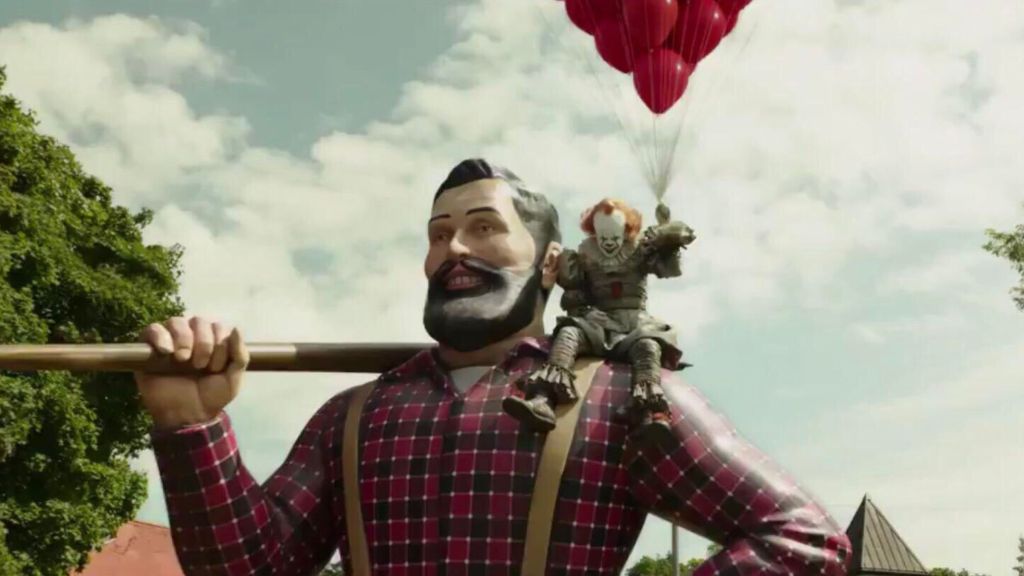
Derry’s massive Paul Bunyan statue is one of the town’s most memorable landmarks, and it played a key role in a standout horror sequence in IT: Chapter Two when it came to life to terrorize Richie Tozier (Finn Wolfhard). The prequel series reveals that in 1962, the iconic statue had not yet been erected. In the first episode, Major Hanlon is seen reading a local newspaper. An article on the front page announces that the town council has officially approved the construction of the statue, cementing its place in Derry’s future landscape. This small detail is a great piece of world-building that shows viewers a version of Derry that is still in the process of becoming the familiar place audiences remember from the films.
3) The Earth vs. Flying Saucers Poster

In one scene, the audience gets a look inside the bedroom of Phil (Jack Molloy Legault), a young boy fascinated by science fiction and the possibility of alien life. His wall is adorned with a poster for the 1956 sci-fi classic Earth vs. Flying Saucers. This is a direct nod to a formative real-life event for Stephen King. In his non-fiction book Danse Macabre, King recounts being at a Saturday matinee of this exact film when the movie was suddenly stopped. The theater manager came on stage to announce that the Soviet Union had just launched Sputnik into orbit. For King, the collision of fictional on-screen horror with a very real Cold War terror was a profound experience that shaped his entire approach to writing, making this poster a clever homage to the author’s own history.
4) Juniper Hill Asylum
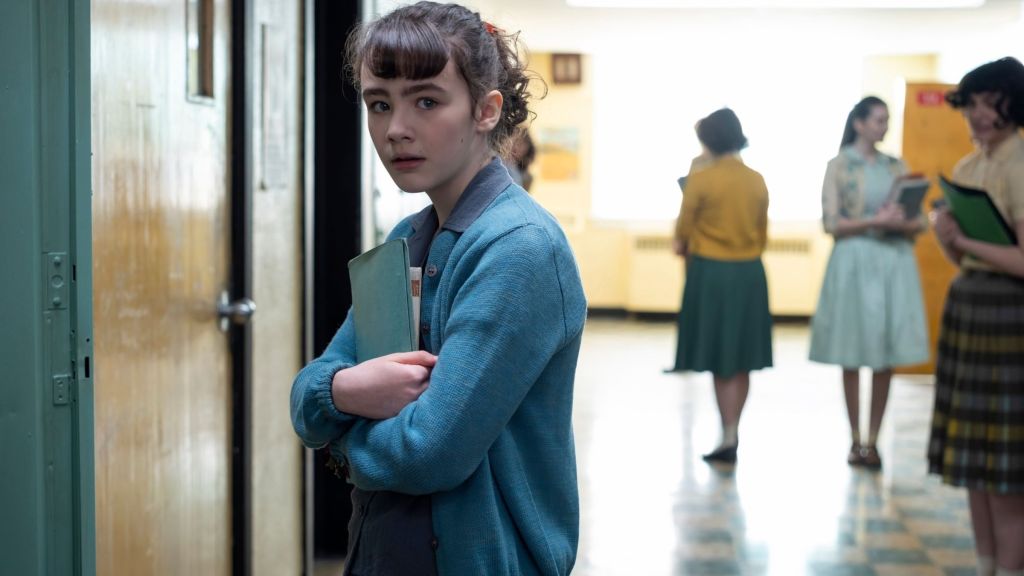
IT: Welcome to Derry introduces Lilly (Clara Stack), a new child in Derry who is cruelly nicknamed “Loony” Lilly by her classmates. Her tragic backstory reveals that she witnessed her father’s gruesome death in a machinery accident at the local pickle factory. The immense trauma of the event led to a severe mental breakdown, and her mother responded by having her committed to the Juniper Hill Asylum. This institution is a recurring location within Stephen King’s literary universe. Juniper Hill has appeared in numerous King stories, including the original IT novel, Needful Things, and 11/22/63, serving as the place where many characters who have been touched by supernatural evil are sent.
5) Turtles Everywhere

The premiere episode is filled with references to turtles, a direct and significant nod to one of the most important figures in King’s cosmic lore. With the 1962 setting placing the story at the height of Cold War paranoia, the children are shown a “duck and cover” film featuring Bert the Turtle, a real educational cartoon from the era. One child is even seen dressed as the character while distributing safety flyers. In a more personal moment, a flashback shows Matty (Miles Ekhardt) giving a turtle pendant to Lilly, who remarks that turtles are supposed to be lucky. All of these references point to Maturin, the ancient and benevolent cosmic turtle who is the sworn enemy of Pennywise in the novels. Maturin is a guardian of The Dark Tower, and these repeated allusions signal that the show will be exploring the more fantastical elements of King’s mythology.
6) Beverly’s Father Is in School
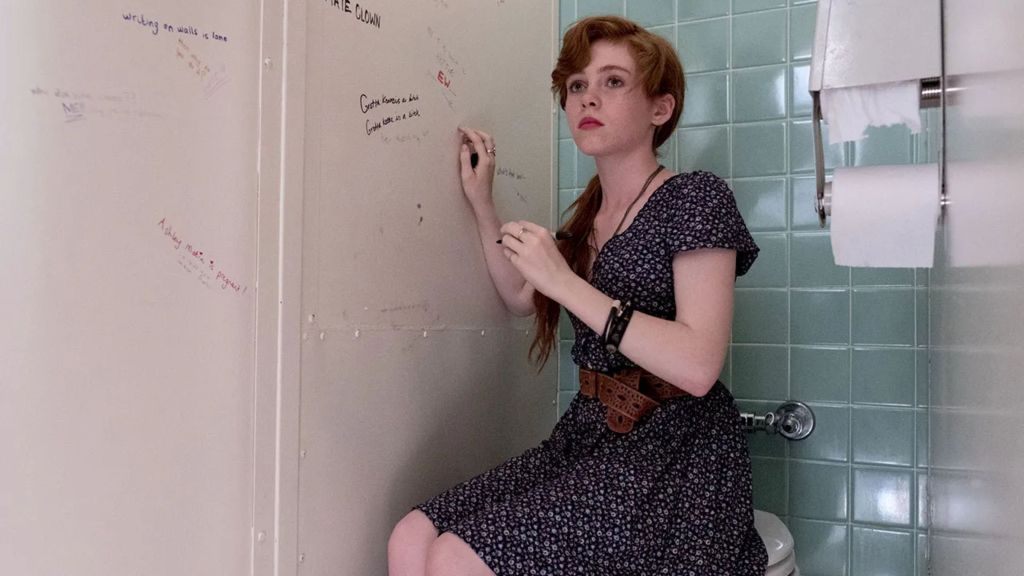
Given that IT: Welcome to Derry takes place 27 years before the events of the first film, it is logical that the parents of the future Losers’ Club would be attending school in 1962. The show confirms this in a brief scene set inside a school bathroom. Scrawled on the wall as graffiti is the name Alvin Marsh. Fans of the book and films will immediately recognize this as the name of Beverly Marsh’s (Sophia Lillis) abusive father. This subtle Easter egg serves as a chilling reminder that the human evil in Derry has deep roots and that the generational trauma that defines the Losers’ lives was festering in the town long before they were even born.
7) The Prophecy of The Music Man
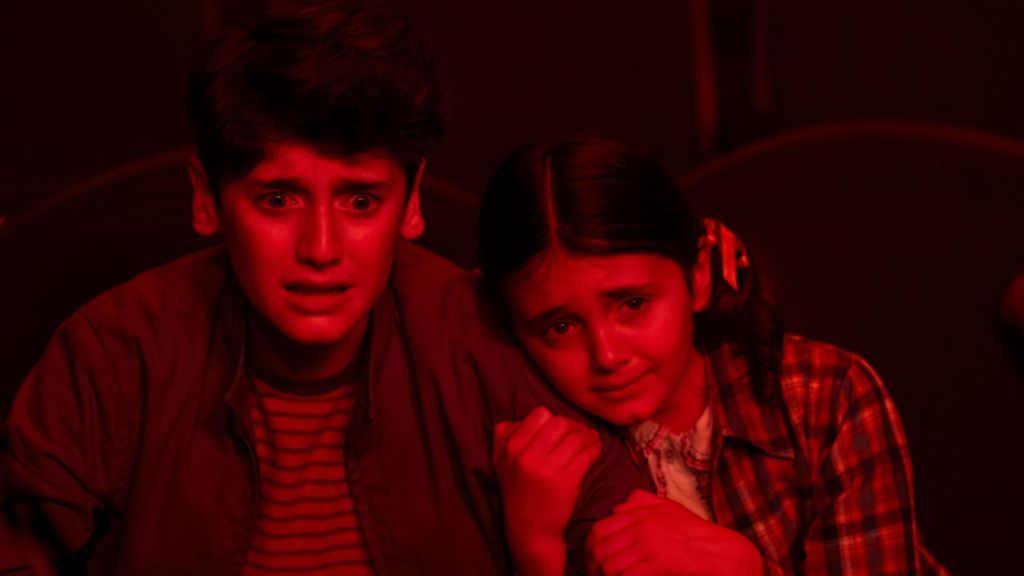
The shocking final sequence of the premiere takes place in a movie theater where the new group of children is watching the 1962 musical The Music Man. As the film plays, the main character, Harold Hill, delivers a line that serves as an eerie prophecy for the future of Derry: “Our children’s children are gonna have trouble.” This moment of on-screen dialogue immediately precedes Pennywise’s brutal attack on the kids in the theater, but it also carries a powerful thematic weight. The line is a direct reference to the creature’s 27-year cycle of violence, foreshadowing the fact that another generation of children, the Losers’ Club, will indeed have to face the same terror when the evil returns to their town.
New episodes of IT: Welcome to Derry premiere on HBO every Sunday.
What other hidden details did you spot in the first episode of IT: Welcome to Derry? Leave a comment below and join the conversation now in the ComicBook Forum!


